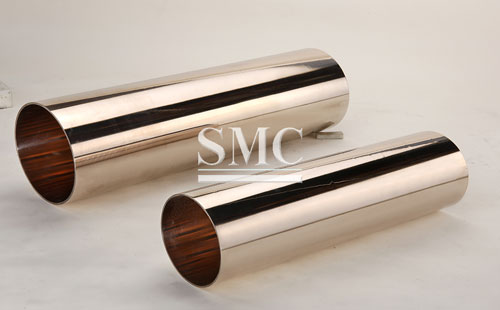Notice: Undefined index: sith_hide_share in /www/sites/alloy.wiki/index/wp-content/themes/likegoogle/single.php on line 32
Deprecated: get_settings is deprecated since version 2.1.0! Use get_option() instead. in /www/sites/alloy.wiki/index/wp-includes/functions.php on line 4862
It is said that at a high temperature of 100 degrees or more, the corrosion resistance of nickel containing 5% is 30 times that of a copper tube, and the corrosion
resistance of nickel containing 10% is 60 times that of a copper tube. is this real? Still exaggerated? It is said that nickel-copper pipes are much more expensive
than copper pipes. How much can it be?
The corrosion resistance of nickel-copper alloy is much stronger than that of copper tubes, and the price difference is not only one level.
At temperatures above 100 degrees, pitting will occur when copper tubes are used for 5 years, while nickel-copper tubes will not.

Under the reducing condition, the AL400 alloy is more resistant to corrosion than industrial pure nickel (UNS N02200) and more resistant to corrosion than the
refined copper alloy under oxidative conditions. AL400 alloys cannot be used in highly oxidizing acids such as nitric acid and nitrous acid. In this environment,
chrome stainless steel, such as Allegheny ludlum E-Brite alloy (UNS S44627 or 310 alloy (UNS S31000), should be used.
Among the moderately reducing acids, AL400 alloys can be considered in neutral or alkaline solutions. The alloy has good corrosion resistance in most alkalis,
salts, organics and the atmosphere. The alloy can be used as a caustic cooler, but in high temperature, high stress, high concentration lye, the alloy will undergo
stress corrosion cracking. AL400 alloy can be used in reducing acids, such as sulfuric acid, hydrochloric acid, especially in the presence of no air or oxidizing
substances in the acid. The alloy has excellent resistance to chloride stress corrosion cracking. The application of this material in seawater and salt water is its
main application area. In the sulfur-containing gas of the AL400 alloy above 371 ° C, corrosion will occur in molten sulfur above 260 ° C.
Metal nickel has almost no acute toxicity, and the general nickel salt is also less toxic, but nickel carbonyl can produce strong toxicity. Nickel carbonyl is rapidly
absorbed by the respiratory tract in the form of vapor, and can also be absorbed by the skin in a small amount. The former is the main way for poisons in the
working environment to invade the human body. When the concentration of nickel carbonyl is 3.5 μg/m 3 , the odor of the lamp smoke is felt, and the person
feels uncomfortable at a low concentration. Absorption of carbonyl nickel can cause acute poisoning. Initial symptoms will appear in about 10 minutes, such as:
dizziness, headache, gait instability, sometimes nausea, vomiting, chest tightness; late symptoms are nausea again after 12 to 36 hours of exposure, Vomiting,
high fever, difficulty breathing, chest pain, etc. Acute chemical pneumonia occurred when exposed to high concentrations, and eventually died of pulmonary
edema and respiratory tract dysfunction leading to death and death, 4 to 11 days after the accident.
Shanghai Metal Corporation is a trusted aluminum alloy, aluminum foil price, stainless steel price and stainless steel manufacturer, kinds of stainless steel in china.
For our full list of products that we offer check out our website here. Be sure to join the conversation in our LinkedIn group, Facebook, Twitter .
Try also our WeChat by scanning the QR code below.
Shirley N.//SMC Editor

Guest contributors are welcome at the Alloy Wiki.It is a weekly wiki and guide on alloy information and processing technology, while also about the vast array of opportunities that are present in manufacturing. Our team of writers consists of a Machining Material Supplier / Machinist / Tool and Die Maker, a Biomedical Engineer / Product Development Engineer, a Job Development Coordinator / Adjunct Professor, and a President and CEO of a manufacturing facility.
Link to this article:Difference Between Nickel Copper Tube and Copper Tube
Reprint Statement: If there are no special instructions, all articles on this site are original. Please indicate the source for reprinting:Alloy Wiki,thanks!^^


